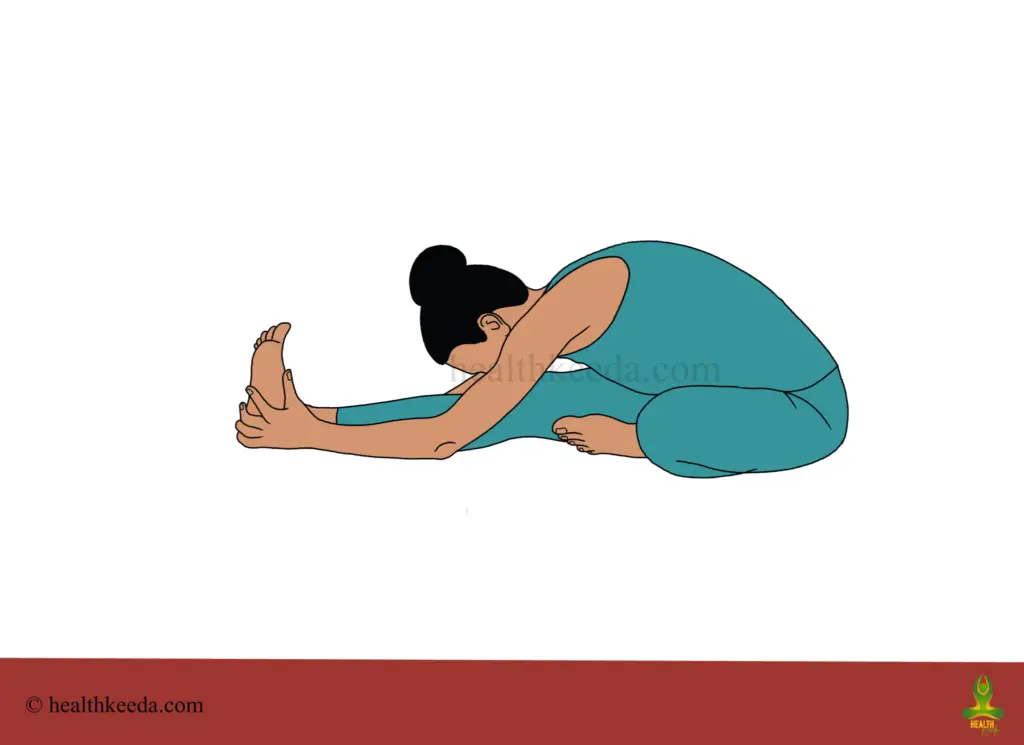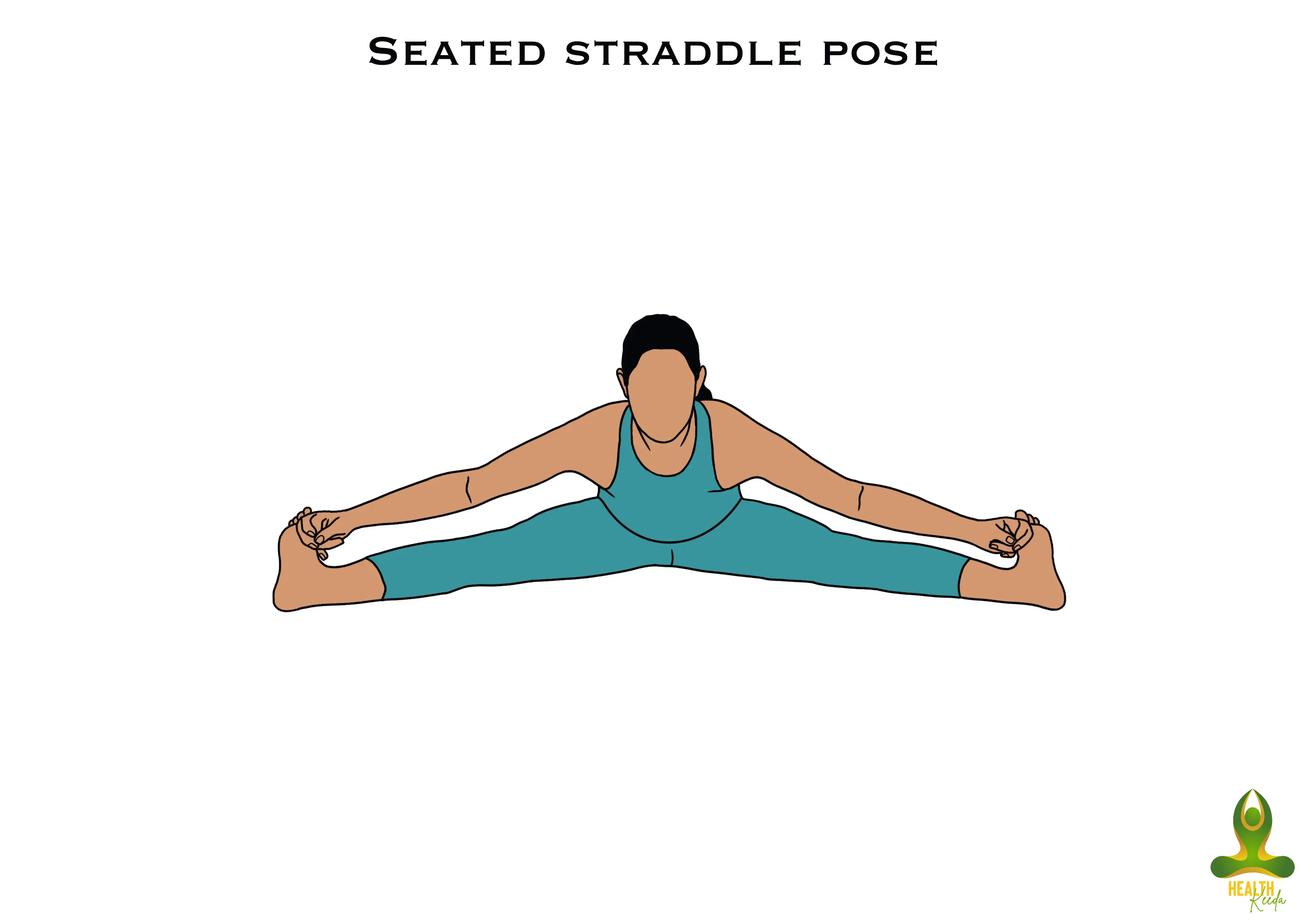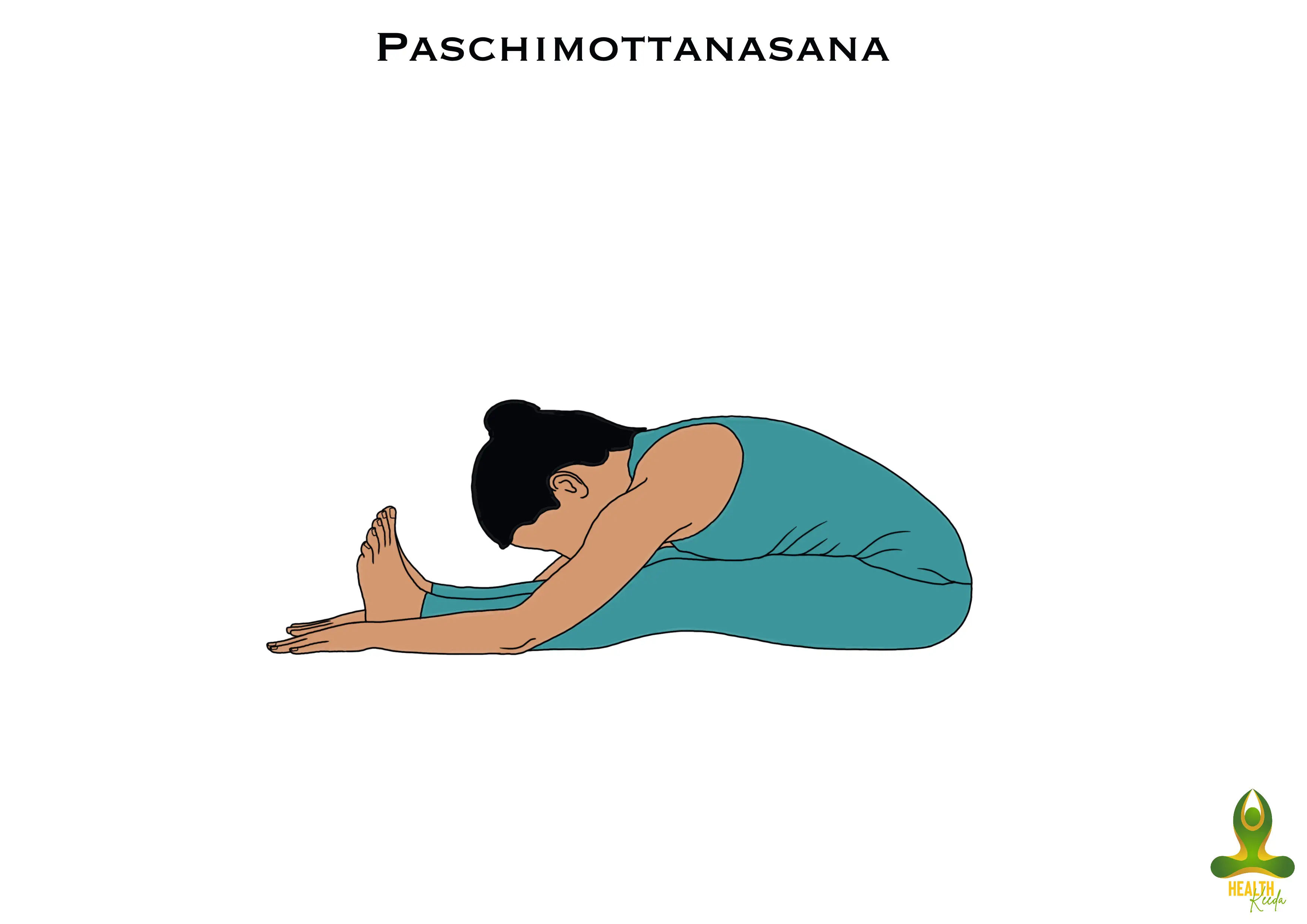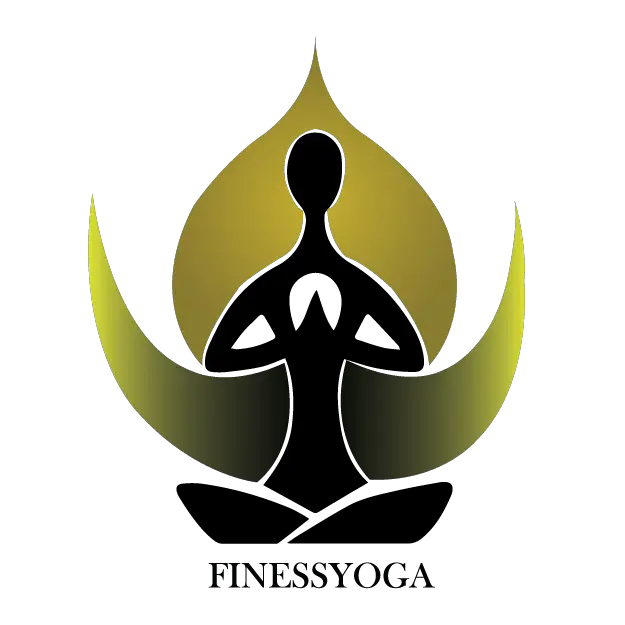Janu Sirsasana is a seated forward bend and a part of primary series of Astanga Yoga. Practicing ‘Janu Sirsasana’ makes the spine more flexible by stretching and expanding it during the practice. It aids digestion by toning abdominal organs and is beneficial for the well functioning of reproductive organs.
Janu Sirsasana is also known as Ardha Paschimottanasana and can be practiced as a preparatory pose before practicing Paschimottanasana (Seated forward bend).
This position is ideal for reducing tension and calming your brain. If you have muscle cramps, this is one of the poses that can help.
Janu Sirasana can be practiced 4-5 times or as per your capacity.
Its name is derived from three Sanskrit words whose meaning has inspired the name ‘Head to Knee Pose’.
Janu = Knee
Sirsh = Head
Asana = Comfortable seat or posture

Steps to practice Janu Sirsasana (Head to knee pose)
- Sit straight with the legs stretched out in front of the body, keeping the feet together.
- Bend the left knee and bring the left heel close to your groin as much as you can comfortably. Place the sole of the left foot to the inside of right leg’s inner thigh.
- Keep the left knee on the floor. Place the palm of your hands on the top of the right knee.
- Inhale and using your pelvic muscles, slowly bend the torso in the forward direction sliding your hands towards the right foot.
- Try to get a hold of right foot if possible, else keep your hands as far as you can comfortably. Ideally, hands are locked behind the sole of the right foot, grabbing the left wrist with a right hand. It takes time to be able to bend to that extent.
- Move your head towards your right leg, if possible touch your knee with your forehead.
- Keep the back relaxed and don’t overstretch the body.
- Retain the final position for a few seconds or as long as you feel comfortable, breathing normally.
- To return, inhale and lift the head, release the hands and bring them back in upright position.
- Take 3 long and deep breaths. Practice again by interchanging the position of the legs.
Practice 2-6 times by changing the position of legs each time.
Precautions for Janu Sirsasana (Head to knee pose)
The time differs from person to person to reach the final position depending on their flexibility and consistency they put into practice. Never rush or force yourself in getting into a posture.
- While moving the trunk forward use the muscles of the pelvic region first and then the spine. Initially, it won’t be easy for people having a stiff body but with practice, it can be learned.
- While you bend forward reaching for the foot, expand the arms from the shoulder.
- Avoid practicing Janu Sirsasana in case you suffer from any of this condition: sciatica, slipped disc, injured knee or a hernia.
Benefits of Janu Sirshasana (Head to knee pose)
- Tones and massages the organs of the pelvic and abdominal region such as pancreas, liver, kidneys, spleen, adrenal glands and gonad glands.
- Improves digestion, remove excess fat from the pelvic and abdominal region. Increase flexibility of the hip joints.
- Gives a good stretch to the spinal column, hamstring muscles and is beneficial for the heart.
- Function as preparatory pose for meditative poseS as it helps in loosening up the legs.
- Beneficial for those who suffer from insomnia, high blood pressure and sinusitis.
- Helpful in curing impotency in males.
Variations
1. Seated Straddle Pose

Seated straddle moves are yoga pose that stretches and opens the inner and back of your legs. This forward bend enhances the effective flexibility of your tendons, allowing you to uphold the mobility required for regular exercise.
2. Paschimottanasana

Paschimottanasana, or Seated Forward Bend, is a traditional yoga posture. It stretches the back side of your body, from your lower legs to your tendons to your spinal column.
Contradictions
- Hamstring dysfunctions
- Gastric problems
- Illnesses affecting the lower back
- Injuries to the leg, hamstrings, or ribs
- Food poisoning
- Pneumonia
Recommended articles:
- Chakrasana (Wheel Pose): steps, cautions & benefits
- Matsyasana (Fish Pose) l Benefits of Matsyasana
- Vajrasana (Thunderbolt Pose) steps, precautions & benefits
Stay healthy stay strong and get the best out of life.
Connect with us using the comments section below. Don’t forget to share the article with your friends and family if you found it useful or interesting.
Thanks for reading. Visit Again.
